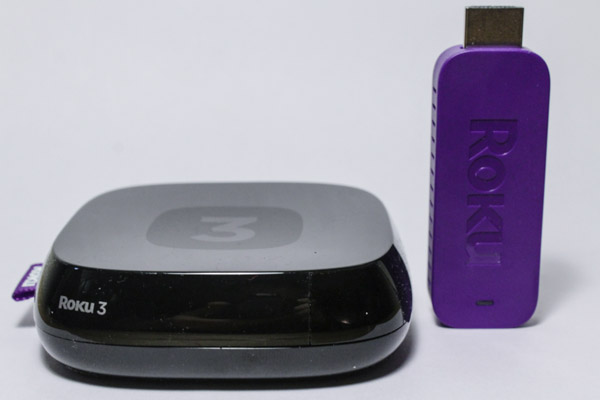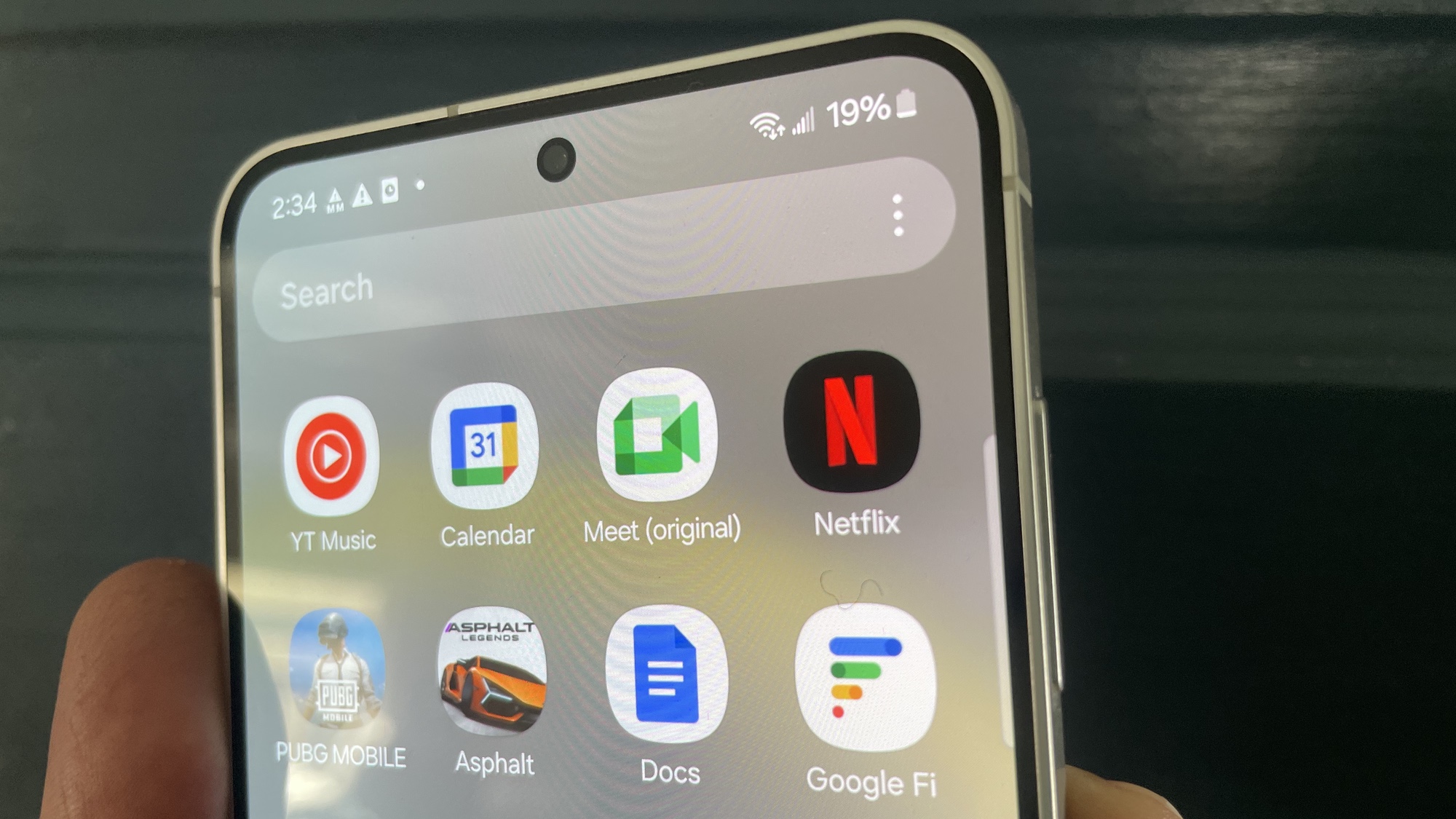Roku Screen Mirroring Isn't Ready for Prime Time
Rokus are the most recent devices to get screen mirroring, but before you buy one, you should know that it doesn't work very well just yet.

Streaming boxes are old news. Watching Netflix on your TV is cool, but mirroring literally anything from your mobile or computer screen to your TV is even cooler. Rokus are the most recent devices to get this feature, but don't run out and buy one just for this capability — at least, not yet.
I went hands-on with the Roku Streaming Stick to try out its new screen mirroring function for Android and Windows Phone 8 devices and PCs running Windows 8.1. (If you have an iPhone, iPad or Mac, you can already screen mirror with Apple TV.) Still a beta feature, Roku's screen mirroring uses Miracast/WiDi technology, which has had an extremely mixed track record every time I've tried it. This application was no exception.
MORE: Best Wireless Screen-Mirroring Devices
First off, setting up Roku screen mirroring is extraordinarily easy: Just make sure your Roku Stick (or Roku 3) has software version 5.6 or later. (Select System Update in the Options menu if it doesn't.) Then activate screen mirroring on your mobile device or computer. (Our guide walks you through it.) Android devices require at least version 4.2 (Jelly Bean) or higher, while Windows mobile devices need Windows 8 and PCs need Windows 8.1.
In my experience, Roku's screen mirroring started off strong, but went downhill rapidly. I started with a Google Nexus 10 tablet, which had flawless performance for checking social media, streaming videos and playing games. The Samsung Galaxy S5 worked pretty well, although the color temperature readjusted itself constantly when I tried to watch Archer on Netflix (color temperature is especially noticeable in cartoons).
Testing with the HTC One M8 proved considerably more trying, however. At first, the phone recognized that the Streaming Stick was on the same network, but would not connect. After a few failed attempts, it stopped finding the stick at all. A Dell XPS 13 laptop found the Roku stick, but actually froze Roku's software when I tried to connect, necessitating a hard reboot. Every device I used had the latest software version available to it.
I tried a second Roku Streaming Stick to see if I could replicate my results, but this device would not connect with any of the four devices. After contacting Roku, I received a prompt response and learned that the company is developing a patch for the freezing bug, which will roll out to all users once it's completed. Roku engineers could not replicate my issues with the HTC One M8, but said that they had not yet tested the Dell XPS 13 and could not vouch for its performance. The company is still in the process of ironing out screen mirroring's bugs before the service's official launch, on a date it has not yet specified.
Keep in mind that as the feature is still in beta, problems like these are neither unexpected nor, in all likelihood, permanent. Roku has not yet announced when the feature will receive a full release. For now, if you have a Roku Streaming Stick or Roku 3, you may as well try out screen mirroring, especially if you have a Nexus device. If you're in the market specifically to buy a new screen-mirroring device, though, you're probably better off with the Microsoft Wireless Display Adapter.
- Wireless Video Streaming: The Miracast & WiDi Disaster
- How to Stream Video to a TV from a Mobile Device or Computer
- Best and Worst Miracast Receivers
Marshall Honorof is a Staff Writer for Tom's Guide. Contact him at mhonorof@tomsguide.com. Follow him @marshallhonorof and on Google+. Follow us @tomsguide, on Facebook and on Google+.
Sign up to get the BEST of Tom's Guide direct to your inbox.
Get instant access to breaking news, the hottest reviews, great deals and helpful tips.
Marshall Honorof is a senior editor for Tom's Guide, overseeing the site's coverage of gaming hardware and software. He comes from a science writing background, having studied paleomammalogy, biological anthropology, and the history of science and technology. After hours, you can find him practicing taekwondo or doing deep dives on classic sci-fi.
-
dthx This article sums up my own experience with every Miracast device I've tried until now. I dislike apple devices for many reasons, but I must recognize that airplay, Apple TV etc have been around for years and work perfectly ... if you accept to be stuck in a closed world. But at least if saves you from all frustrations you'll see in the what we believe is the open world ;-)Reply
I've never seen a miracast device that works in a reliable way and with a user guide and GUI that looks a bit professional. It's truly junk !
The only thing that's more promising is a Chromecast key: it's easy to setup, reliable and looks great but ...
- nothing for Windows phones
- can't/won't play many codecs (AC3 audio / DTS / ... files have to be transcoded or recoded to play on this thing, which makes the interaction with DSVideo (synology) rather complicated).
- Synology for example will let you throw video or audio at it, but no photos.
- In windows you are limited to clone a chrome tab on the screen, but it's no true screen mirroring.
... Still waiting that someone comes up with a truly universal (and efficient) system before I change my TV to some smart TV that will be able to make good use of media servers and mobile devices. There are some models out there, but I wanted to keep this outside the TV, just use it as a monitor as those features evolve at a rate much faster than the rate at which we buy TV's (and I don't believe that any TV manufacturer will push firmware updates to stay up to date ... they normally want you to buy a new one every now and then eventhough you don't need it!). -
scuba1954 I have a windows desktop PC with 8,1 and I wanted to try screen mirroring with my roku3. I tried to follow the intructions from Roku and from here regarding using my PC but when I got the bar on the right side of my screen to come up I would choose the devices button then project but I never would see any add devices option. I would have to go to change PC setting then PC then devices. The first time I did this my PC found the roku. I clicked add then the roku screen said it us loading a video but it froze. I unplugged and then plugged it back in but now I can not find my pc no longer finds my ROKU3?? I have a second roku3 in my bedroom and my PC never has NEVER found this.Reply -
emk84 scuba1954 this is happening to me right now. You have to remove the device manually and try again. Control Panel>Devices and Printers. Right click on your Roku 3 and remove. Keep in mind...I have done this about 15 times and it continues to get stuck on loading video. Extremely frustrating.Reply -
scuba1954 Reply15153771 said:scuba1954 this is happening to me right now. You have to remove the device manually and try again. Control Panel>Devices and Printers. Right click on your Roku 3 and remove. Keep in mind...I have done this about 15 times and it continues to get stuck on loading video. Extremely frustrating.
I will try this when I get home. Thanks.

